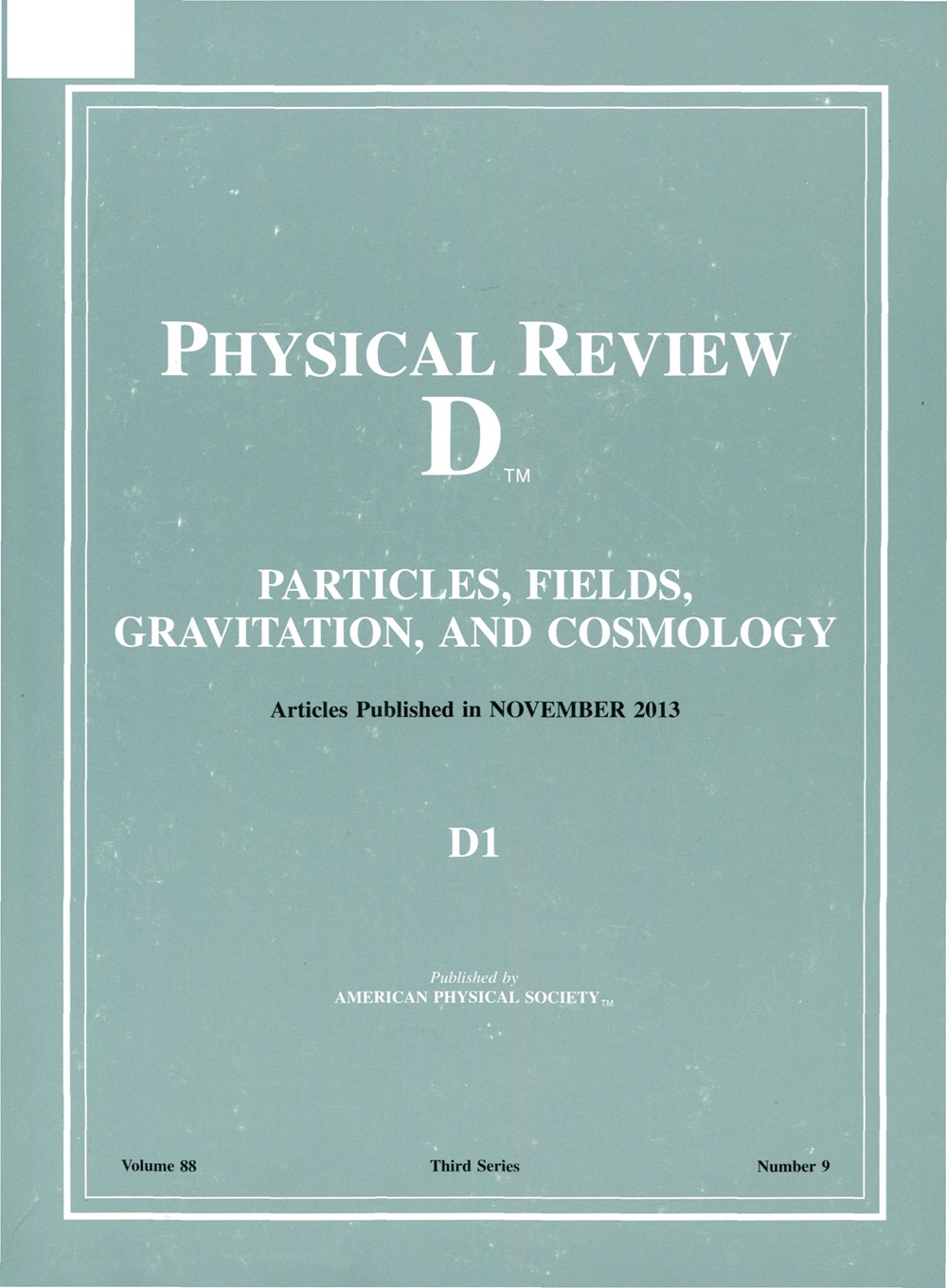氢原子O(α)阶引力张量-单极矩
IF 5.3
2区 物理与天体物理
Q1 Physics and Astronomy
引用次数: 0
摘要
在量子电动力学(QED)中,我们计算了氢原子基态O(α)阶动量-电流密度Tij的引力张量-单极矩。得到τH/τ0−1=4α3π(lnα2−0.028)= - 3.06×10−2,其中τ0= 2/4me为一级矩。次一级修正的物理原理类似于著名的能级兰姆位移。2024年由美国物理学会出版本文章由计算机程序翻译,如有差异,请以英文原文为准。
Gravitational tensor-monopole moment of the hydrogen atom to order O(α)
We calculate the gravitational tensor-monopole moment of the momentum-current density Tij in the ground state of the hydrogen atom to order O ( α ) τ H / τ 0 − 1 = 4 α 3 π ( ln α 2 − 0.028 ) = − 3.06 × 10 − 2 τ 0 = ℏ 2 / 4 m e Published by the American Physical Society 2024
求助全文
通过发布文献求助,成功后即可免费获取论文全文。
去求助
来源期刊

Physical Review D
物理-天文与天体物理
CiteScore
9.20
自引率
36.00%
发文量
0
审稿时长
2 months
期刊介绍:
Physical Review D (PRD) is a leading journal in elementary particle physics, field theory, gravitation, and cosmology and is one of the top-cited journals in high-energy physics.
PRD covers experimental and theoretical results in all aspects of particle physics, field theory, gravitation and cosmology, including:
Particle physics experiments,
Electroweak interactions,
Strong interactions,
Lattice field theories, lattice QCD,
Beyond the standard model physics,
Phenomenological aspects of field theory, general methods,
Gravity, cosmology, cosmic rays,
Astrophysics and astroparticle physics,
General relativity,
Formal aspects of field theory, field theory in curved space,
String theory, quantum gravity, gauge/gravity duality.
 求助内容:
求助内容: 应助结果提醒方式:
应助结果提醒方式:


